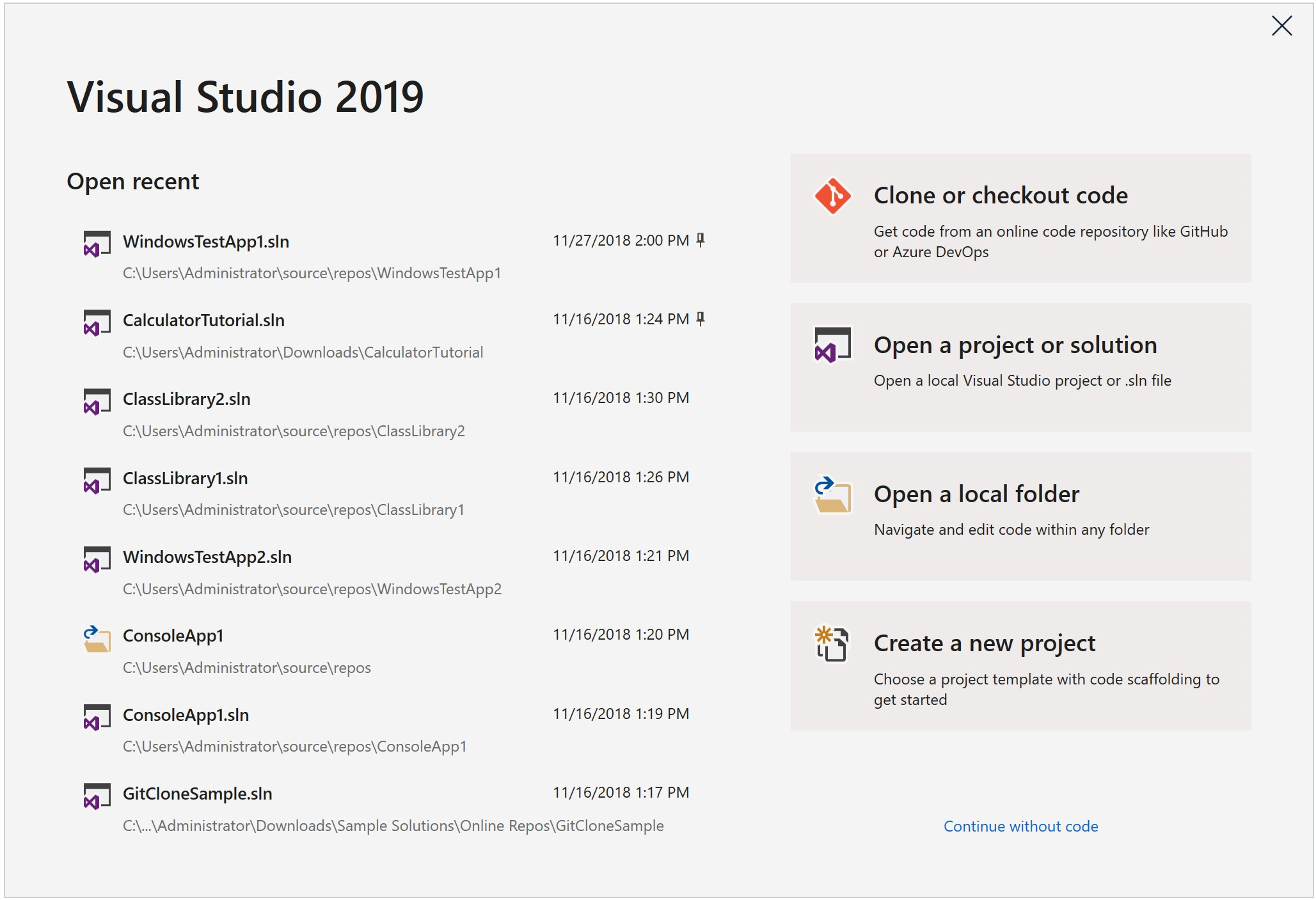At its Microsoft Connect(); 2018 virtual event today, Microsoft announced the initial public preview of Visual Studio 2019 — you can download it now for Windows and Mac. Separately, .NET Core 2.2 has hit general availability, and .NET Core 3.0 Preview 1 is also available today.
Microsoft launched Visual Studio 2017 in March 2017 and Visual Studio 2017 for Mac in May 2017 and then released seven subsequent updates to further improve their performance. That was the “most popular Visual Studio release ever,” but in June the company announced Visual Studio 2019 for Windows and Mac.
As before, Visual Studio 2019 previews will install side by side with Visual Studio 2017, which is great for trying out new functionality without messing with your production workflow. Visual Studio 2019 also won’t require a major operating system upgrade, Microsoft promised. Visual Studio 2017 worked on Windows Server 2012 R2 (and later), Windows 7 (and later), and Mac OS X El Capitan 10.11 (and later).
New features
Visual Studio 2019 brings numerous productivity improvements, enhanced collaboration, and faster tooling, Microsoft promised today. The initial public preview includes a new start window experience to get developers into their code faster, increased coding space, a new search experience, more refactoring capabilities, smarter debugging, AI-powered assistance with IntelliCode, and built-in access to Visual Studio Live Share.
June 5th: The AI Audit in NYC
Join us next week in NYC to engage with top executive leaders, delving into strategies for auditing AI models to ensure fairness, optimal performance, and ethical compliance across diverse organizations. Secure your attendance for this exclusive invite-only event.

The new start window on launch is designed to work better with today’s Git repositories, including local repos, Git repos on GitHub, and Azure Repos. Git aside, you can still open a project or a solution or create a new one of either.

Visual Studio’s UI and UX have also received subtle changes, such as a new product icon, a cleaner blue theme, and a more compact title and menu bar. There’s also a new search experience that replaces the Quick Launch box. It lets you find settings and commands and install options, and it even supports fuzzy string searching.

Visual Studio 2019 improves the code maintainability and consistency experiences with new refactoring capabilities — such as changing for-loops to LINQ queries and converting tuples to named-structs. There’s also a new document health indicator and code clean-up functionality.

As for debugging, stepping performance is improved and search capabilities have been added to the Autos, Locals, and Watch windows. You can also expect improvements to the Snapshot Debugger to target Azure Kubernetes Service (AKS) and Virtual Machine Scale Sets (VMSS), and better performance when debugging large C++ projects, thanks to an out-of-process 64-bit debugger.
IntelliCode and Live Share
At its Build 2018 developers conference in May, Microsoft previewed IntelliCode and Live Share. The former uses AI to offer intelligent suggestions that improve code quality and productivity, and the latter lets developers collaborate in real time with team members who can edit and debug directly from Visual Studio and Visual Studio Code.

Visual Studio IntelliCode is getting custom models and expanded language support. Custom models further improve the AI-enhanced IntelliSense, giving developers personalized recommendations based on the patterns and libraries used in their code, on top of the analysis made on thousands of open source repos. Visual Studio developers now get IntelliCode for XAML and C++ code, in addition to C#. Visual Studio Code developers can use IntelliCode when developing JavaScript, TypeScript, Python, and Java.

The public preview of Visual Studio Live Share, which is available as an extension for Visual Studio Code, is getting new features to help developers collaborate in real time, including sharing desktop apps, source control diffs, and code commenting. It’s also easier to start a session and view who you’re working with in a dedicated space at the top right of the user interface. Since Live Share is installed alongside the IDE by default, the features are available in Visual Studio 2019.
Speaking of which, Microsoft did not provide a timeframe for Visual Studio 2019’s release. As its name implies, we can expect it to arrive next year, possibly at Build 2019.
.NET Core 2.2 and .NET Core 3.0 Preview 1
Microsoft today released .NET Core 2.2 with diagnostic improvements to the runtime, support for ARM32 for Windows, and Azure Active Directory for SQL Client. Other improvements include enabling tiered compilation by default, as well as new features in the ASP.NET Core web stack, such as hosting model improvements for IIS; Web API improvements, including API security; template updates for Bootstrap 4 and Angular 6; and HealthCheck upgrades. .NET Core 2.2 also offers data stack enhancements, Entity Framework Core, and support for spatial extensions in SQL Server and SQLite. For more details, check out the release notes.
Announced at Microsoft’s Build 2018 developer conference in May, .NET Core 3.0 is the next generation of the .NET Core platform. It promises significant updates to web, cloud, IoT, AI/ML, and Windows desktop workloads.
Microsoft today launched .NET Core 3 Preview 1 for Windows, Mac, and Linux. You can develop .NET Core 3 applications with Visual Studio 2017 15.9, Visual Studio for Mac, and Visual Studio Code.
.NET Core 3.0 adds support for Windows Presentation Foundation (WPF) and Windows Forms (which today were open-sourced), bringing Windows desktop development to .NET Core. It enables more flexible deployment with side-by-side and self-contained EXE and better performance. For more details, check out the release notes.
